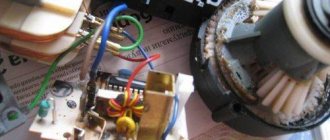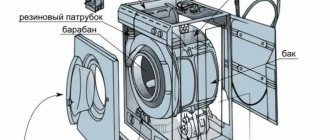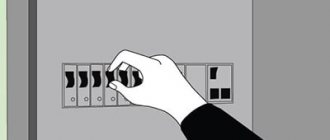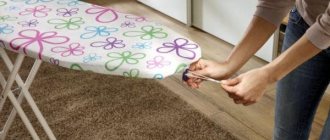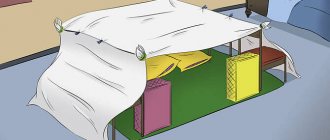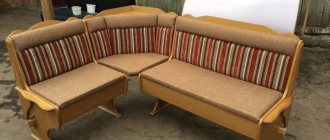What are the features
Many people try to choose a moisture-resistant countertop for their kitchen, since moisture is considered the main enemy of furniture in the kitchen. But don't forget about other factors.
No one is immune from scratches or chips on the surface of furniture. This is especially true for kitchen units that experience increased loads.
After all, we cut food on them, beat meat, put a hot frying pan or saucepan. Plus, many people wash the dishes and immediately put them away without drying them.
Now there are many means with which you can return your wood-look countertop to its original appearance.
How to repair an artificial stone countertop?
Artificial stone products look great in a modern kitchen interior. Artificial stone retains its attractive appearance for a long time. However, despite their strength, countertops made of artificial stone require careful care, since the surface can easily be damaged by concentrated household chemicals, mechanical impact or hot objects.
Repairing the countertop should be done immediately after a defect is discovered, since the slightest damage over time can result in labor-intensive and expensive repairs.
Important! The maintainability of artificial stone products is high, so there is a chance to restore their original appearance.
Fighting stains
If hard-to-remove stains appear on the surface, you can try to eliminate them with a special polyester composition. Sanding the table top with sandpaper of various grain sizes - from P120 to P400 - helps a lot. After sanding, the problem area is polished with felt.
How to eliminate chips?
A chip, even a significant one, can be eliminated with a special composition based on polyester resin. Repairs are carried out in this order:
- Degrease and clean the countertop around the damaged area.
- Seal the chip with special resin.
- After complete drying (18-20 hours), sand the surface of the tabletop with a diamond-filled abrasive and polish with felt.
In most cases, restoring such products is a complex process, and it is better to contact a specialist.
And also read a selection of articles:
- How to update a countertop with your own hands.
- DIY tile countertop.
- How to glue table top edge with glue.
Types of damage
Before starting repairs, you need to assess the current condition of the product. The type of defect determines how you will eliminate it. This can be done with epoxy resin, wax and other materials.
The following types of damage are typical for laminated chipboard countertops:
- Scratches
. Appear due to the use of sharp objects. Basically this is cutting food with a knife; - Cracks
. They may appear due to point loads or temperature changes. But the main reason is initially incorrect production, assembly or installation. Restoration of a crack is possible, but if it is small; - Chips
. Appear on the edges of the tabletop. This is a small recess that reveals the internal contents of the product. The danger is that moisture actively penetrates through the chip; - Dents and breaks
. This is the result of sharp and heavy blows. Most often as a result of beating meat; - Burns
. Even a burnt countertop can be restored. Burns appear from hot and heated objects. It happens that the laminated film swelled from a hot object and then began to char; - Swelling
. Forms where there is a high level of humidity. The filling softens, increases in volume, and breaks the laminated coating from the inside.
The cost of repair largely depends on the type and complexity of the defect. If it is more than 50% of the cost of a new countertop, restoration is pointless.
Recommendations for extending the life of kitchen furniture
Prevention will help to avoid scratches, peeling and swelling of the material.
Preventive measures:
- Additional processing. Waterproof sealant is applied to the joints between the sink and the table, as well as between the table and the countertop.
- Aluminum strips protect the integrity of the coating from moisture. An edge is installed on each side of the furniture. This must be done immediately after purchasing the furniture.
- Silicone prevents the coating from swelling. When installing the countertop, treat the entire surface adjacent to the stove.
- Waterproof sealant. When replacing the sink, the product is applied to all open areas of the table.
- Special stands. Whatever the material of the countertop, taking care of the coating will help extend its service life. You should not place hot objects on the table; it is better to place fabric or foam material under them.
You should also not put foods on the table that can change its color. It is better to use a board for cutting.
What to use for recovery
There are several types of products that can be used in the process of such work as repairing a countertop made of laminated chipboard.
We are talking about the following materials:
- Furniture wax
. I have already talked about furniture wax separately. Suitable for combating chips and dents; - Polish and varnish
. Fixes the applied coating and adds shine; - Retouching products
. This is a marker, strokes, felt-tip pen. Paint over small scratches, tint the wax to the desired shade; - PVA
. Glue that impregnates sawdust, filling voids where the surface is swollen; - Furniture edges
. The name says it all. Plus there is a detailed article about them; - Sealant
. Fills joints near the sink to avoid new wetness; - Decorative film
. It is important to use if you need to reupholster the entire tabletop.
Which of these you need depends on your specific situation.
I propose to consider different types of damage and their restoration.
How and with what to repair/remove a chip on a kitchen countertop at home
Before you begin restoring kitchen furniture, you need to take measurements. This is important to ensure that the repaired areas do not exceed the original dimensions.
If the slightest sign of deformation appears, do not hesitate. You can treat damaged areas with silicone - it will protect the material from moisture penetration. Waterproof acrylic sealants also have similar properties.
How to restore a plastic tabletop
To repair chips on a plastic tabletop, a special adhesive composition is used. For example, transparent glue “Moment Plastic”, applied with a gun. They are convenient for gluing broken pieces of furniture. The disadvantage of glue is its high price.
Reference. You can repair cracks, cuts and scratches using regular instant glue.
A large chip can be repaired using Titan glue. The fallen piece of plastic is ground into powder and mixed with glue. The resulting mixture is used to treat the damaged area.
Chipboard countertop repair
How and what to use to repair a chip on a chipboard tabletop? Before starting repairs, it is necessary to prepare the coating - sand the area and then sand it. It is best to use felt to rub the surface.
To restore a chipboard tabletop you will need:
Step-by-step instructions for repairing the coating:
- Turn on the hair dryer and warm up the damaged area.
- Remove any loose coating.
- Cover the damage with a layer of glue and leave it to dry for 25 minutes.
- Prepare a mixture of shavings and glue. Mix the ingredients and leave to brew for 10-15 minutes.
- Pour the prepared mixture into the damaged area and compact it with a spatula.
- Pull both parts of the crack together and use the remaining glue to fill the void.
- Remove excess adhesive mixture.
- The table can be used after 24 hours.
Experienced craftsmen recommend using a press to make the mixture more dense. It can be made from two bars, the height of which does not exceed the height of the table. Planks are placed on the top and bottom of the tabletop and tightened with two clamps.
Reference. To protect the restored area from damage, it is covered with a sealant.
If the laminate of the countertop has come off, but the coating itself has not swollen, you can treat the joints and corners with sealant or silicone.
Restoration of wood flooring
To repair tables, manufacturers produce special compounds - hard waxes and furniture touches.
Wax is designed to remove dents, chips and scratches. It also increases the moisture resistance of the coating and resistance to mechanical damage. Before use, it is heated with a lighter, then the damage is repaired and left for three seconds. Remove any remaining product using a utility knife and sanding.
A furniture touch will help get rid of minor scratches. Before application, shake the product, then apply 2-3 times. When the composition dries, remove any excess with a soft cloth.
Chip on MDF board
Shallow scratches and burn marks can be removed with a sander. When working, use a fine abrasive wheel.
If there is no suitable equipment, minor damage is sanded with medium and then fine-grained sandpaper. The treated area is polished with soft felt.
A small repair kit can be used to repair large cracks.
Will be needed:
- furniture felt-tip pen-retoucher;
- putty of a suitable color;
- putty melter;
- spray varnish.
Film peeling
See also
Table for standing work: design options, sizes, why it is needed
The simplest problem. Appears due to contact of the countertop with moisture.
Here you can place a section of the film on the glue, press it, and wait until it dries completely.
Treat the joints with sealant. This will prevent the film from peeling off in the future.
Sealants and silicone are especially useful in fixing problems in the sink area.
Repairing damage to a plastic table
Quite a popular material used for the manufacture of kitchen furniture, which does not swell or get wet. However, mechanical stress on plastic furniture often leads to the formation of cracks or chips, especially in the kitchen.
To repair such a countertop, you will need a special adhesive composition intended for plastic products. This will allow the loose covering to be reattached.
If minor flaws appear on the table - cuts, scratches, then you can do without expensive glue; you can also use regular instant glue for these purposes.
Soaking
See also
Furniture thrust bearing: what is it for, how and where to attach it
If the layer of chips swells under the film, you will have to apply more effort. You will need a sharp knife or spatula, PVA, a press block and clamps.
The sequence is:
- dismantle the tabletop;
- carefully remove the swollen sawdust from under the film;
- dry the product thoroughly;
- mix dried sawdust with PVA glue to obtain a thick mass;
- fill the voids with this product, compact it;
- cover with bars and press the area with clamps;
- leave for 24 hours to dry;
- remove the press, level the surface;
- use edge tape.
That's it, the renovation is complete.
Crack
See also
DIY ottoman for the hallway: brilliant ideas, master class
If the crack is small, any experienced craftsman will still advise you to immediately begin restoration. Otherwise, the defect will only increase.
To work you need PVA, a pair of clamps, a retouching tool and a medical syringe.
The restoration process looks like this:
- fill the syringe with glue and fill the crack with it;
- install clamps on the sides to tighten the defect;
- After 24 hours, paint the area with the desired color.
Additionally, it is worth treating the surface with transparent varnish.
Break and chip
If the edges have been damaged, repairs will be difficult.
To remove chips and dents on a countertop, you need a hard type of furniture wax, sandpaper, chisel, touch-up, soft cloth and clear varnish.
Here you need:
- smooth the edges and sand them with sandpaper;
- melt the hard wax to a viscous consistency;
- apply wax to the treated area;
- give the edge the desired shape;
- if the dent is in the center, the recess is filled with wax;
- the wax dries, then you need to cut off all excess and sand it thoroughly;
- apply retouching;
- varnish to add shine.
The instructions seem quick and clear. But the work must be done extremely carefully.
Holes
The appearance of holes on a chipboard tabletop is associated with physical impact on it. They may look like dents or be completely through. There are two methods of dealing with them. The first involves the use of PVA glue:
- Cleaning the hole from sawdust and loose particles of chipboard. Making the edges as smooth as possible.
- In a separate container, you need to make a composition of PVA glue and sawdust. The result should be a thick paste, similar to wet sand or softened plasticine. Only in this case will the adhesive mass keep its shape.
- The hole is filled with the resulting glue-sawdust mixture. It is pressed into the hole very tightly with a rubber spatula so that there is no void.
- Leave the half-restored product to dry for 10-12 hours.
- After the required amount of time has passed, the filled hole is leveled with a metal spatula and sandpaper. The tabletop should turn into a completely smooth surface.
- Impregnate a piece of microfiber cloth with a felt-tip pen of a suitable shade and treat the problem area with it. If additional restoration of the texture is necessary, it is carried out with a retouching felt-tip pen.
- Coating the surface with varnish.
For the second method of eliminating damage to the kitchen surface, hard wax is used:
- The hole is cleaned of fallen pieces and sawdust. The edges of the hole are made smooth.
- Next, the wax melts (you can take a lighter) and fills the resulting holes.
- For the composition to harden, it is left for 2-3 hours. After this, excess wax is removed with a spatula and sanding is performed. The sanded area is rubbed with a soft cloth.
- Returning color and texture to the filled hole is done using a retouching felt-tip pen.
Coating the tabletop with a fixing protective varnish.
Consequences of burns
If you put something hot on the laminated layer and a burn mark appears, you can still return the tabletop to its previous appearance.
Here the instructions will be like this:
- use sandpaper to rub the damaged area;
- if burned deeply, additionally remove the charred area with a chisel;
- apply a layer of soft wax;
- level the surface;
- sand thoroughly using a soft cloth;
- touch up with a marker or pencil of a suitable shade;
- Apply a layer of clear varnish.
If you are patient and careful, the result will pleasantly surprise you.
It is important to prevent the same situations from happening again.
It will be interesting to know what our readers use to cover and retouch tabletops.
Tips for repairing damage and preventing it
Tabletop repairs are carried out as carefully as possible so that the restoration site does not stand out from the rest of the surface.
A few tips will help with this:
- When choosing how to cover a chipboard countertop, pay attention to the rest of the kitchen design. If the facades are glossy, choose a glossy varnish coating. For calmer kitchens, matte varnish is more suitable.
- If you couldn’t find a coloring composition that perfectly matches the color of the countertop, then a tint varnish will help hide the differences between the problem area and the rest of the surface.
- To prevent delamination of the work surface, immediately after purchase, cover its ends with silicone compound and plastic strips. Additionally, the entire surface is treated with varnish.

